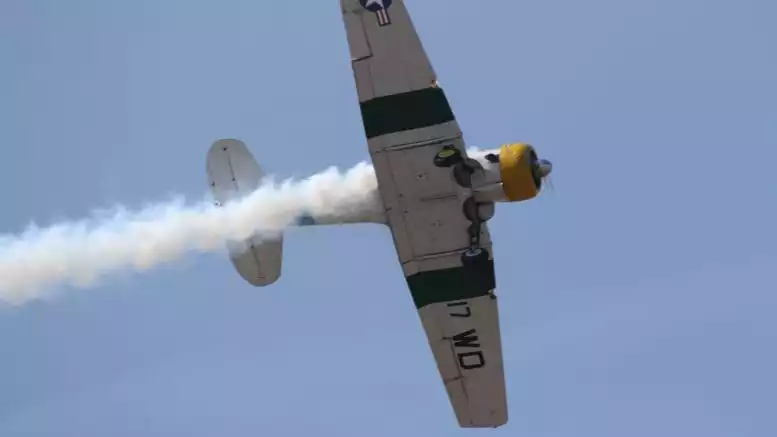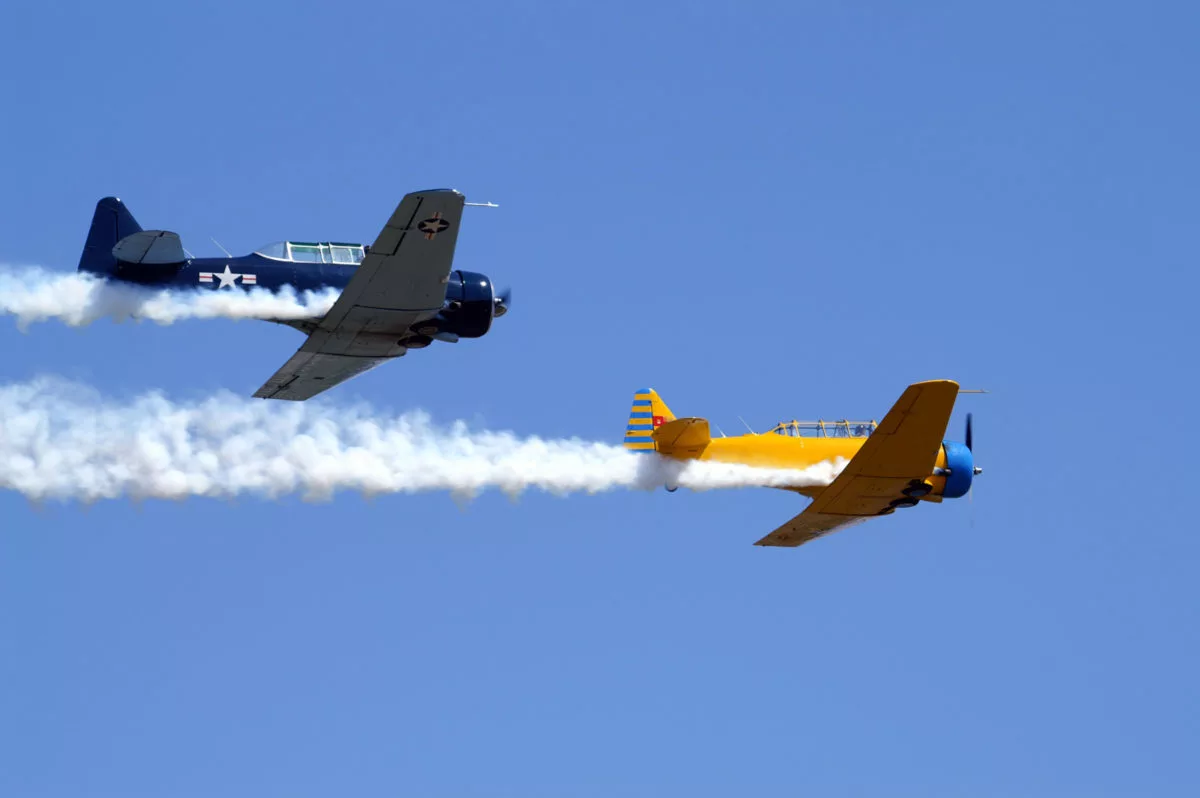Flight Dynamics: How Do They Impact Air Shows?
Air show pilots must have an in-depth knowledge of flight dynamics to ensure safety throughout each performance. Here is how the dynamics of flight impacts air shows.
Flying aerobatic aircraft is much more than simply wowing the crowd. A lot is going on in and around the aircraft. To push an airplane to its limits, pilots must have a detailed understanding of flight dynamics to ensure that each display is conducted with the utmost safety. Today we will look at some of the principles of flight and why they are so crucial during airshows.
Flight Dynamics: The Basics
Four key factors interact together to determine an airplane’s behavior. This is true whether the aircraft is an old warbird, such as a P-51 Mustang, or something jet-powered like a MiG-17.
Let’s take a brief look at them:
1. Lift
Lift is the force generated by the wings that keeps the airplane flying along. You’ll notice that wings have a curved upper section. This is what causes the lift to be generated.
When the wing moves forward, the air moves faster over the curved upper surface and creates a pressure drop. Low pressure above the wing and high pressure below the wing causes it to move upward.
Here’s an important point to remember. Wings only work when they are moving through the air. If there is no air moving over the wing, it stops producing lift. This is called a stall!
Pilots often have to fly at fast speeds (especially in aircraft with short little wings) to generate enough airflow to keep the airplane flying.
2. Weight
Weight is caused by the earth’s gravity. It is the opposing force to lift. Weight always acts in a downward direction. For an airplane to fly, the lift produced by the wings must be enough to overcome the airplane’s weight! So, for a heavier airplane, more lift is needed to maintain level flight.
3. Thrust
This is the power produced by an engine, whether it is jet or propeller-driven. Thrust acts in a forward direction. This causes air to flow over the wings and makes more lift! In very basic terms, the faster an airplane flies, the more lift is produced by the wings!
4. Drag
Have you ever put your hand out of a car window when it is moving? Did you feel resistance? That is what we call drag. Drag is the resistance of the air when a body passes through it.
Drag is the opposite of thrust and acts in a backward direction. If drag is greater than thrust, the airplane will slow down… This means less lift generated by the wings. Once the lift slows beyond a certain point, the wing can stop working… Again, this will lead to a wing stall!
How are Aerobatic Airplanes Controlled?
There are three control surfaces on most airplanes. They interact together so that the pilot can steer and perform maneuvers.
1. The Ailerons
These are located on the wings and move in opposite directions. When they move, they change the shape of the respective wing slightly. So, the wings generate different amounts of lift. This causes the airplane to roll.
2. The Elevators
The elevators are located on the horizontal section of the tail. Unlike the ailerons, these both move in the same direction at the same time. They cause the tail to move up or down.
When the tail moves up, the nose pitches down. When the tail moves down, the nose pitches up.
3. The Rudder
The rudder is the ‘fin’ on the tail of the airplane. This controls yaw. It works exactly like a rudder on a boat and causes a similar movement, left and right, without any roll.
How do Flight Dynamics Impact Airshows?
Airshows are fast and fun with some really high-performance airplanes. The dynamics of flight affect how the airplanes fly and what you see. Here are a few examples…
1. Pulling G’s
Would you believe us if we told you the pilot and the airplane weigh up to 9 times as much during a single maneuver?
As you sit and read this article, you are affected by gravity. This is called ‘1G’.
When an airplane is pulling around a loop or out of a dive, the force of gravity is multiplied. Twice the gravity or ‘G’ means twice the weight! If a pilot pulls 6G’s during a hard loop, he actually weighs 6 times as much!
Remember we said that lift must be greater than weight to keep flying? This is why many maneuvers have to be performed at high speed to ensure enough lift is generated to recover from a loop or dive.
2. Stalling
If the wing stalls, there is an easy way for the pilot to make it work again. By diving, they can cause air to flow over the wings!
Simple, right?
This is only simple if you have enough room to dive the airplane.
When operating close to the ground, this isn’t an option, so pilots always have to make sure they have enough speed to keep the wing working as it should!
Stunt pilots typically observe a hard altitude to always ensure that they have sufficient space to recover if the airplane stalls or cease a maneuver safely. This altitude is determined by an aerobatic box.
3. Barrel Rolls
Weight always acts in a downward direction. Lift always acts in the direction that the upper surface of the wing is facing.
Can you see why a roll must be a carefully managed maneuver?
When the airplane is inverted, the lift is actually acting in the same direction as the weight!
Down!
4. Knife-Edge Flight
This is particular to aerobatic flying, where the aircraft flies while rolled 90° to the horizon.
But where is the lift coming from if the wings aren’t opposing the weight?
Well, it’s a bit technical, but the rudder and airplane body generate some lift; this, combined with the thrust and some inertia, means that an airplane can fly sideways for short periods.
The dynamics of flight are a really complex and detailed subject. You’d be amazed at the number of interactions and physics that surrounds aerobatic airplanes as they fly. Pilots who fly in airshows have to be acutely aware of their aircraft’s limitations and have detailed knowledge of how to avoid creating a dangerous situation.
Keep a lookout at the next airshow, and you’ll be able to see some of these principles in action!
Ready to Soar with Us?




